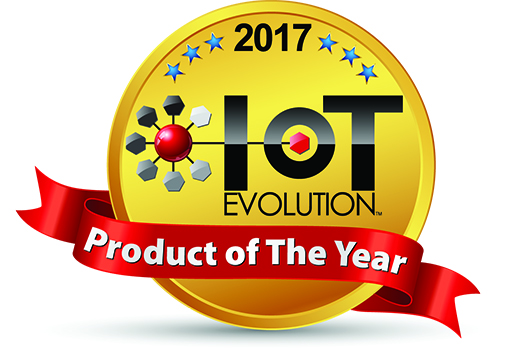It’s quite an honor to win two awards from IoT Evolution in the space of a week, and on the heels of being selected as the 2017 Innovative IoT Product of the Year by Compass Intelligence. In fact, the readers of Datanami were the first to recognize Striim as one of the best IoT solutions when they awarded us the Best Big Data Product for the Internet of Things last fall.
We attended the IoT Evolution Expo in Las Vegas last week and were awarded “Best in Show” for “Best IoT-Specific Code or Development Solution.” This was wonderful in itself, and showed recognition for the effort we have put into the Striim Platform to make it both powerful and easy-to-use when creating IoT solutions.
Just a few days later, IoT Evolution announced we were a “2017 IoT Evolution Product of the Year” award winner! These awards honor “the best, most innovative IoT products and solutions released in the last twelve months.” Recognition like this doesn’t come easily, and is greatly appreciated. I’m not going to guess the reasons why we were selected, but I will highlight a few thoughts on the show itself that may shed some light on the thinking of the IoT Evolution team.
The IoT Evolution conference had a great collection of keynotes and track presentations talking about the latest discussion topics around IoT.
One topic that repeatedly came up was the amount of IoT data being generated, and that data’s short shelf life. An interesting figure was cited that 90% of IoT data loses its value completely within 60 seconds. This is pretty evident to anyone who has ever built a location-based application – people and things move around, and you can be a mile away within 60 seconds, so analytics need to respond fast.
Striim is perfectly positioned to handle this problem. I even wrote an entire article around it, “Why Time Value of Data Matters.” If you want to process and analyze data within 60 seconds of it being created, you can’t put it into a database, drop it into a lake or send it to the cloud. You need to process and analyze in-memory, in real-time, before it’s ever stored. This is essential given you can’t possibly store all the data, but that’s another story.
The speaker from Verizon summed it up best with the IWWIWWIWI acronym: I Want What I Want When I Want It. People are used to getting information rapidly, and 60 seconds is increasingly not fast enough. IWWIWWIWI means that information should be immediately on-hand, and in the world of IoT, that means immediate processing of data and real-time delivery of alerts, insights and prescriptive analytics to the right people.
The other topic that caught my attention was “exactly what is IoT?” The consensus appeared to be that IoT is not a single technology or market, and it is not useful to call everything IoT. It is an eco-system and does not belong in a silo. IoT devices, platforms, systems and software needs to co-exist with the enterprise.
In short, it is an integration problem, and if you fold in the point I discussed above, it is a real-time integration problem. Without real-time integration of IoT data with other enterprise data, you are not making the most of your investment and are not obtaining maximum value. For example, by joining or correlating IoT data with ERP information you can understand sensor readings within the context of parts, warranties and orders, and make better decisions.
Given the scope of the conference, and the discussions we had, it was an honor to be awarded twice for our work in IoT, and great recognition of the power and ease-of-use of the Striim Platform.























